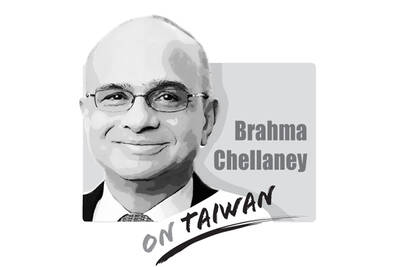As the Internet sweeps the world, many domestic news media have set up Web sites to provide online news. They have also tried to apply realtime interactivity to their news reports.
The first newspaper to publish exclusively on the Internet, T Times (
John Pavlik, a scholar at Columbia University, divides the development of Internet news into three stages. The first stage, consists of simply uploading to the Internet the news content of traditional media.
In the second stage, online news reporters start to develop news content taking into account the characteristics of the new media -- utilizing hyper-links, search engines and other interactive tools. Furthermore, they begin to "personalize" news content.
In the third stage, news Web sites would design their news content based on the features of the Internet; stories would be reported in new ways, developing the concept of "online communities."
This analysis, however, does not take into consideration one important factor in the process of news production and broadcasting -- the role of readers.
A very interesting aspect of the Internet phenomena still persists as usage rapidly expands: Internet users are neither the most powerful people or people who have the most resources. Students use it more than their teachers, and teachers do so more than their supervisors. Despite the fact that many surfers are the well-educated elite, they usually are not important policy-makers -- in other words they are not the type of people whom reporters usually interview.
In other words, the question facing the Internet news reports is no longer "how many people visit our Web sites?" or "How many people read our newspaper?" Rather, it is "Who reads online news?"
The reward for being a journalist is far more than the paycheck, and social status of a journalist usually does not match his influence. When journalists are doing their job, they not only use their reports as a bridge to interact with their interviewees, but also to develop a sense of power, growing out of awareness that their reports could influence social development and policy-making. All these are closely related to the readership of online news.
When journalists cannot help doubting whether their news is being read by their parents, interviewees and people in positions of power, how to make their reports meaningful poses a challenge. Unless online journalists realize that they write for readers rather than interviewees or specialists, they will inevitably feel lost.
Moreover, with their weaker influence, interviewees might discriminate against them in favor of traditional media reporters.
For online news media established by traditional media groups, the problem may not be as serious as for media which only publishes online news. On one hand, the reputation of traditional media would help their online news edition reach powerful readers. On the other hand, as long as the content of their online news also appears in the traditional news media, the anxiety about who the readers are can be easily resolved. For those journalists who work exclusively for online news, this anxiety over uncertain readership can be difficult to dispel.
With the trend towards the use of the Internet, online news media is thriving and the number of online journalists is increasing dramatically. Before the era of Internet media arrives, however, we should wait until the social environment matures. And one of the important catalysts for a matured social environment is encouraging our powerful decision-makers to browse the Internet themselves.
Lin Ho-lin is an associate professor of mass communication, National Taiwan University.

China badly misread Japan. It sought to intimidate Tokyo into silence on Taiwan. Instead, it has achieved the opposite by hardening Japanese resolve. By trying to bludgeon a major power like Japan into accepting its “red lines” — above all on Taiwan — China laid bare the raw coercive logic of compellence now driving its foreign policy toward Asian states. From the Taiwan Strait and the East and South China Seas to the Himalayan frontier, Beijing has increasingly relied on economic warfare, diplomatic intimidation and military pressure to bend neighbors to its will. Confident in its growing power, China appeared to believe
After more than three weeks since the Honduran elections took place, its National Electoral Council finally certified the new president of Honduras. During the campaign, the two leading contenders, Nasry Asfura and Salvador Nasralla, who according to the council were separated by 27,026 votes in the final tally, promised to restore diplomatic ties with Taiwan if elected. Nasralla refused to accept the result and said that he would challenge all the irregularities in court. However, with formal recognition from the US and rapid acknowledgment from key regional governments, including Argentina and Panama, a reversal of the results appears institutionally and politically
In 2009, Taiwan Semiconductor Manufacturing Co (TSMC) made a welcome move to offer in-house contracts to all outsourced employees. It was a step forward for labor relations and the enterprise facing long-standing issues around outsourcing. TSMC founder Morris Chang (張忠謀) once said: “Anything that goes against basic values and principles must be reformed regardless of the cost — on this, there can be no compromise.” The quote is a testament to a core belief of the company’s culture: Injustices must be faced head-on and set right. If TSMC can be clear on its convictions, then should the Ministry of Education
The Chinese People’s Liberation Army (PLA) provided several reasons for military drills it conducted in five zones around Taiwan on Monday and yesterday. The first was as a warning to “Taiwanese independence forces” to cease and desist. This is a consistent line from the Chinese authorities. The second was that the drills were aimed at “deterrence” of outside military intervention. Monday’s announcement of the drills was the first time that Beijing has publicly used the second reason for conducting such drills. The Chinese Communist Party (CCP) leadership is clearly rattled by “external forces” apparently consolidating around an intention to intervene. The targets of